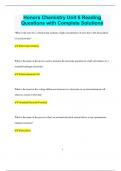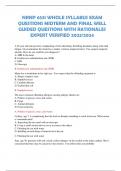Exam (elaborations)
MICROBIOLOGY AN INTRODUCTION 13TH EDITION (GLOBAL EDITION) BY GERARD TORTORA, BARDELL FUNKE, CHRISTINE CASE SOLUTIONS MANUAL
MICROBIOLOGY AN INTRODUCTION 13TH EDITION (GLOBAL EDITION) BY GERARD TORTORA, BARDELL FUNKE, CHRISTINE CASE SOLUTIONS MANUAL
[Show more]













